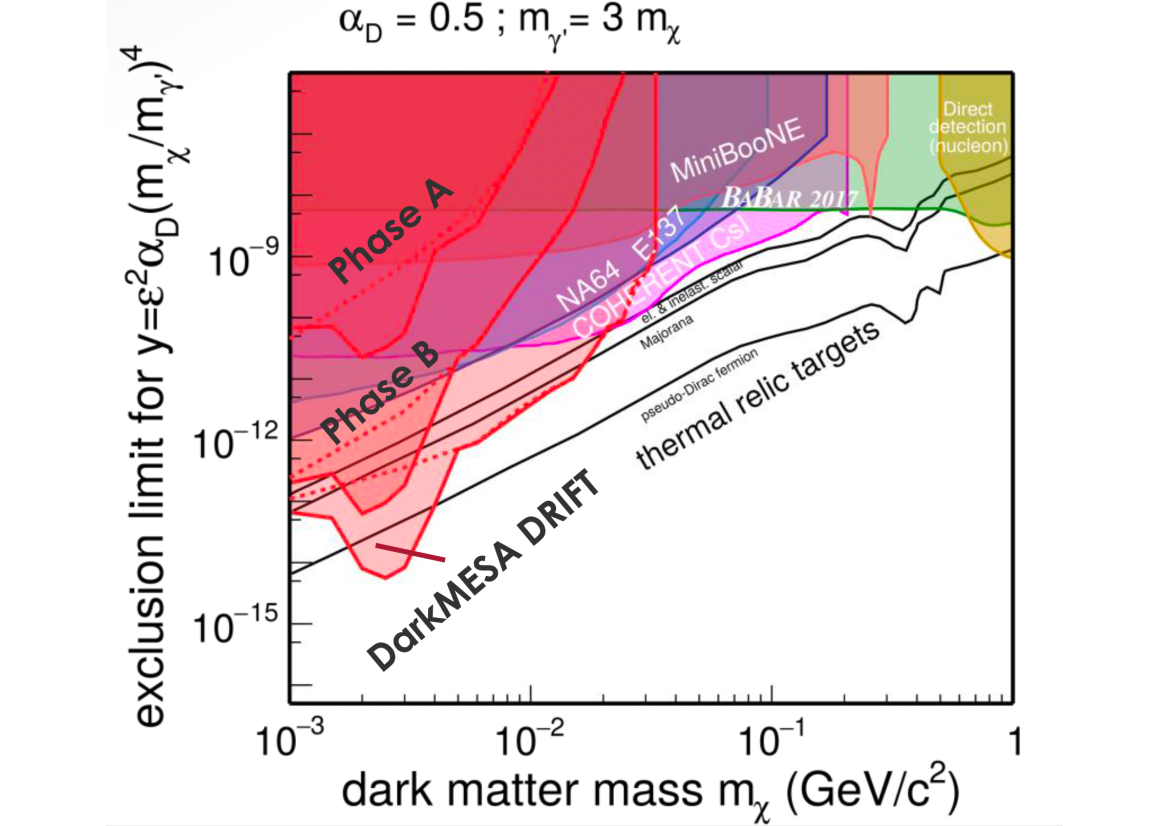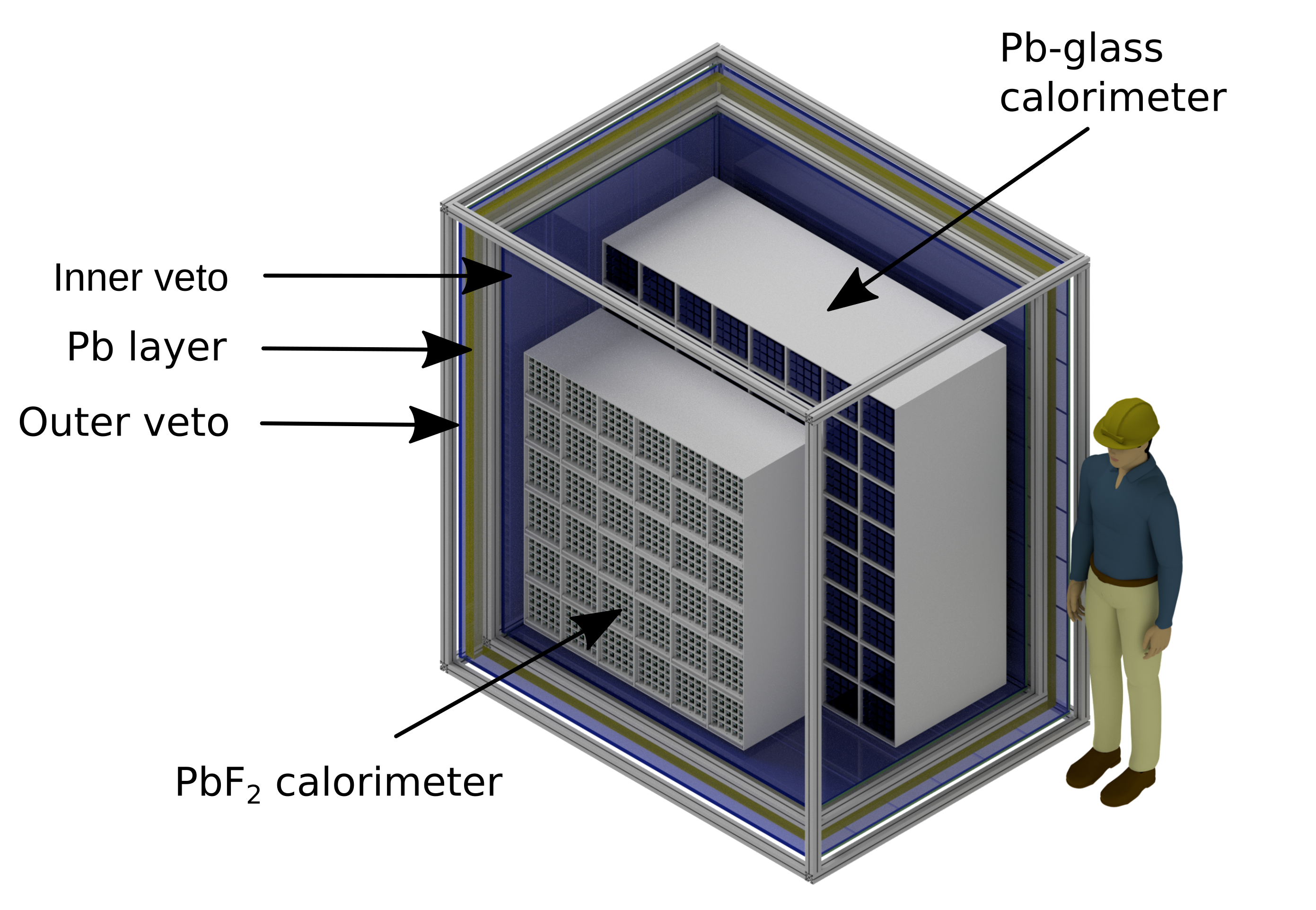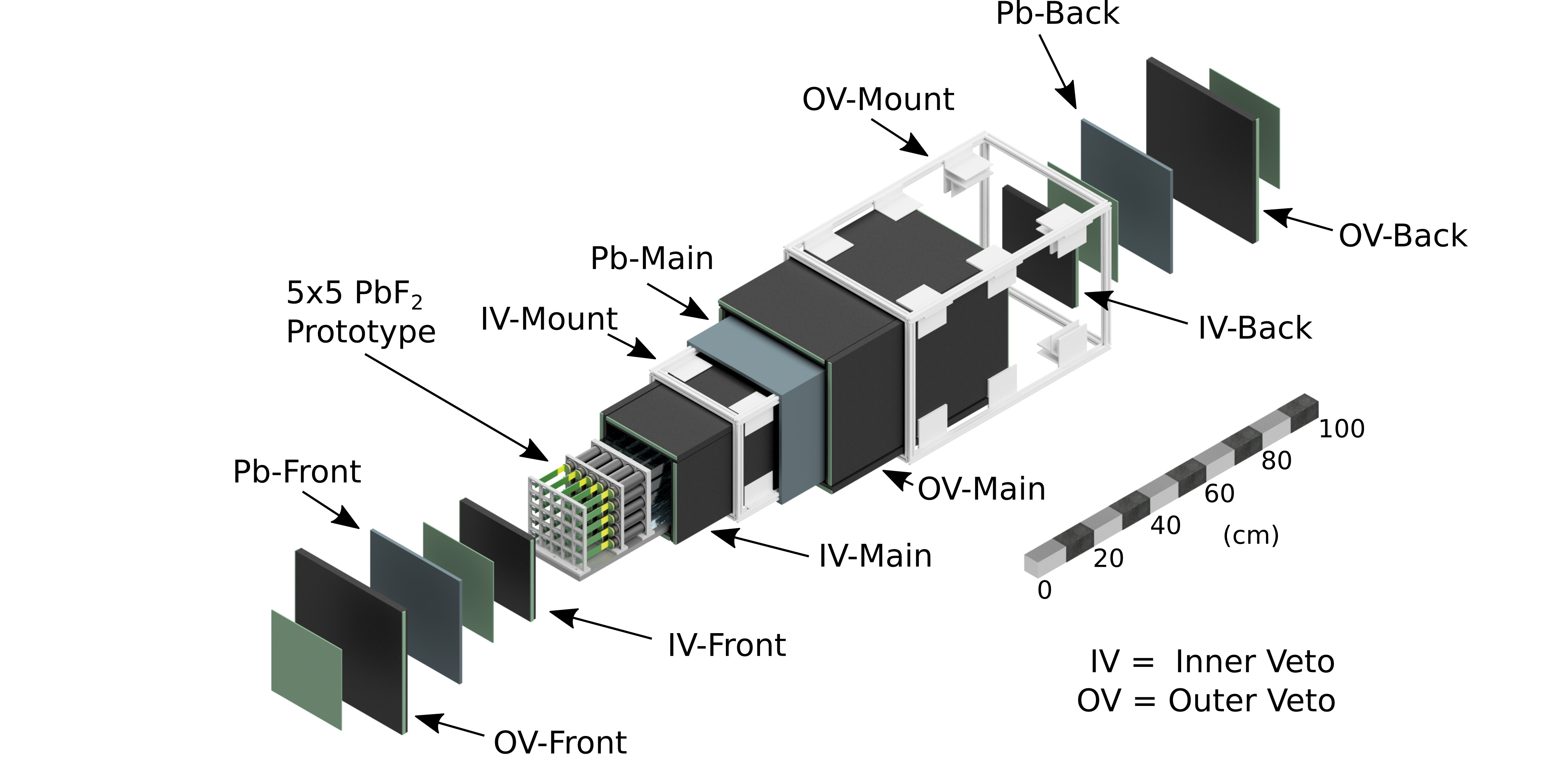DarkMESA




For the understanding of the DarkMESA experiment it is important to take a closer look at the ⇒ P2 experiment. It uses the Extracted Beam Mode of MESA, which implies that the beam electrons are stopped in a beam dump after their passage through the liquid hydrogen target of P2.
This high-power beam dump of P2 serves as a source for the hypothetical beam of light dark matter particles and is ideally suited for a parasitic dark sector experiment in which parasitic means that DarkMESA can run simultaneously with P2.
Since the energy of the beam electrons is about 150 MeV and therefore below the pion production threshold, no beam-induced background by neutrinos is expected. Simulations have shown that it is also not very likely for beam-induced neutrons to reach the DarkMESA detector. Therefore the largest background contribution is expected from cosmic-rays which is beam-unrelated. This background can be measured together with all other beam-unrelated backgrounds when P2 is not running. This shows the advantage that DarkMESA is able to take data permanently and independent from the other experiments.
The detector concept of DarkMESA includes electromagnetic calorimeters surrounded by active veto counters. The veto counters are placed in two layers - the inner veto (IV) and the outer veto (OV) - and a layer of lead plates will serve as absorber material in between the two veto layers.
Suitable calorimeter materials were determined from material studies at the Mainz Microtron (⇒ MAMI) with 6 to 14 MeV electrons and a Geant4 simulation. PbF2 and the lead glass Schott SF5 performed best.
The calorimeter will be build up in several stages, whereby the active volume is constantly expanded. High density Cherenkov radiators (PbF2) from the previous A4 experiment and SF5 crystals from the SAPHIR experiment at CERN will be used. The prototype Phase A will use 5 x 5 PbF2 crystals read out individually by photomultipliers and comprises an active volume of 3.6 liters. For Phase B, several of these PbF2 modules will be arranged in a wall layout as well as 4 x 4 modules of SF5. This results in a total active volume of 700 liters for Phase B. The two stages are shown schematically in Fig. 1.
With MadGraph and the Geant4 simulation the exclusion limits for the two stages were determined whereby an energy threshold of 10 MeV and a total of 7.42x1021 primary beam electrons for Phase A and 2.22x1022 for Phase B were assumed. This corresponds to the duration of P2 of at least 2,200 hours in Phase A and 6,600 hours in Phase B. The results are shown in Fig. 2.
In the dark matter mass range up to 5 MeV the DarkMESA Phase A and B projections show, that it is possible to improve the existing exclusion limits. On top DarkMESA DRIFT can extend the accessible parameter space to higher dark matter masses. The thermal relic targets (black lines) declare that light dark matter was produced thermally in the early universe. It is therefore desirable to cover these areas with exclusion limits. The DarkMESA Phase B and DRIFT exclusion limits can touch these thermal relic targets and thus make a great contribution to the search for light dark matter.
The veto detector system will consist of roughly 80 plastic scintillator plates with 2 cm thickness and approximately 5000 cm² surface area arranged in two layers. The scintillators will be read out by silicon photo-multipliers (SiPMs) possibly connected to wavelength-shifting fibers for an improved light collection.
In Fig. 3 the veto concept for DarkMESA Phase B is shown. Between an inner and an outer veto layer (blue), sheets of lead (yellow) will prevent low-energy γ-rays from reaching the calorimeter.
The detection efficiency of the veto system for particles leading to background events will be crucial for this
experiment.
Simulations and experimental studies with the Phase A prototype (Fig. 4) are currently underway.